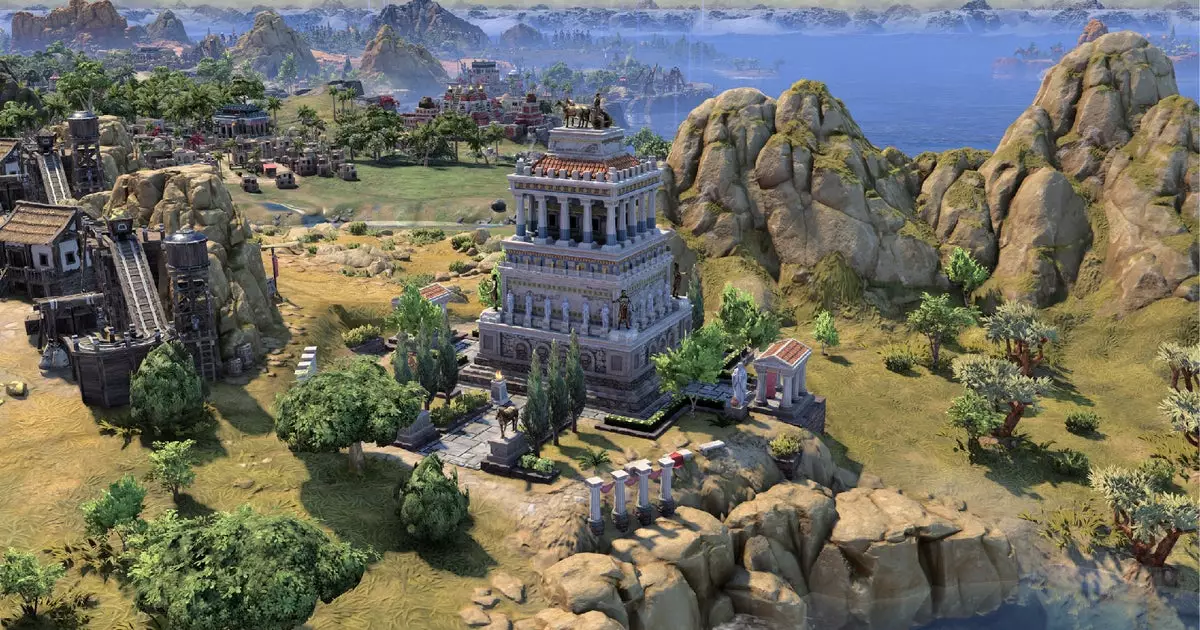In the complex landscape of strategic gaming, few titles inspire as much debate and enthusiasm as Civilization. As a perennial favorite, Civ’s updates serve not only to enhance gameplay but also to reflect evolving design philosophies and technological advancements. The recent launch of update 1.2.4 exemplifies this ongoing transformation. While at face value, it appears to be a routine patch—introducing wonder tweaks, UI improvements, and AI refinements—its behind-the-scenes implications reveal a bigger narrative about progress, stability, and community engagement. Such updates underscore the importance of balancing innovation with stability, a challenge that developers must continually navigate to satisfy their dedicated player base.
Understanding the Disruption: Why the Update Affected Mods More Than Usual
Initially, many players perceived 1.2.4 as a disruptive force, particularly because it broke a large portion of existing mods. Firaxis’s explanation sheds light on a vital aspect of game development—back-end architecture shifts. The transition to a new UI system was a necessary evolution, promising more reactive interfaces and streamlined workflow in the long term. However, this came at a cost: the structural upheaval of UI files led to widespread compatibility issues with user-created modifications. This scenario exemplifies the inherent risk of ambitious technological upgrades, especially in a game with a vibrant modding community.
From a critical perspective, this incident highlights a recurring dilemma in game updates: the tension between innovation and backward compatibility. Developers often prioritize future-proofing and maintainability, but in doing so, they risk alienating early adopters and content creators who rely heavily on mods. Firaxis’s transparency in acknowledging the issue and providing rollback options demonstrates a commendable respect for their community, yet it also raises questions about the precautionary measures before deploying such sweeping changes.
Strategic Adjustments and Their Impact on Gameplay
Beyond technical behind-the-scenes work, the patch brought meaningful gameplay modifications aimed at balancing strategies and fostering more diverse victories. For example, earlier access to Erdene Zuu and rebalancing of wonder-building locations serve to diversify strategic choices and prevent certain civilizations from monopolizing victory paths. These tweaks are crucial to maintaining a dynamic and fair game environment, especially considering Civ’s complex interplay of factors like civic paths, resource placement, and diplomatic relations.
Moreover, nerfing some powerhouses such as the Gate of All Nations and House of Wisdom reflects a conscious effort to curb early-game dominance—an enduring challenge in 4X strategy games. Conversely, buffing other wonders to make them more viable adds layers of strategic depth. Such calibrations demonstrate that Civ’s developers recognize the importance of maintaining tension between offense, defense, and cultural development, ensuring no single approach becomes overwhelmingly superior. These updates, while seemingly minor, resonate deeply with serious players who value nuanced balance as essential to long-term engagement.
The AI and Interface: Improving the Player Experience from Multiple Angles
A game’s intelligence system often dictates the longevity and challenge it offers players. Firaxis’s focus on enhancing AI behavior—making opponents more competitive and less predictable—intimates a desire to elevate the game’s challenge level while reducing frustrating illogical moves such as conceding defeat under unfavorable circumstances. This evolution suggests a commitment to smarter, more realistic interactions, fostering a more immersive and challenging experience without resorting to artificial difficulty spikes.
Simultaneously, interface improvements open avenues for better accessibility and usability. In a game notorious for its complexity, even small UI refinements can significantly impact the player’s ability to plan, strategize, and manage resources. Firaxis’s acknowledgment that the UI overhaul was a “big shift behind the scenes” emphasizes their intent to create a sustainable foundation for future enhancements. Such progress may seem incremental but underscores a clear vision: to make Civ not just a game of strategy, but an increasingly intuitive and responsive experience.
Amidst the Chaos, An Opportunity for Reflection and Growth
While some critics might view these updates as symptomatic of broader developmental growing pains, it’s worth considering the ideological shift behind these changes. The move towards a more modular, reactive UI hints at a future where civ players can expect more personalized, adaptable gameplay environments. Enhancing stability, balancing wonders, and tweaking AI behavior are steps toward an ecosystem that can evolve alongside its community rather than remain static.
In essence, Civ 7’s latest update exemplifies the constant push and pull in game development: pushing technological boundaries while managing the fallout of necessary upheavals. It signals a move toward longevity—both for the game itself and its player community—by addressing core issues with transparency and targeted improvements. For strategists and casual players alike, such updates reflect a collective pursuit of mastery, adaptation, and enduring challenge in a game that continues to define the genre.

